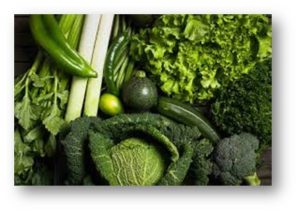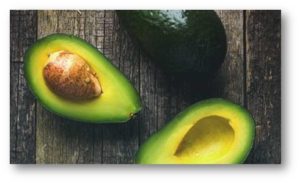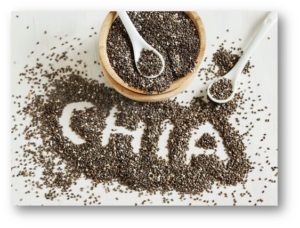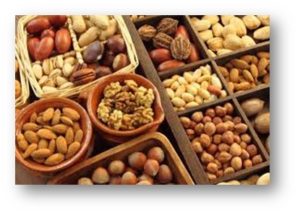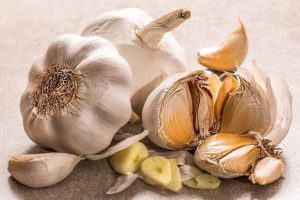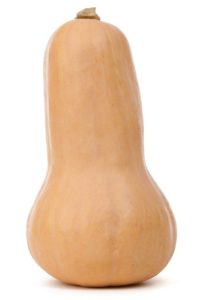Figuring out the best foods to eat when you have diabetes can be tough.
That’s because your main goal should be controlling your blood sugar levels.
However, it’s also important to eat foods that help prevent diabetes complications like heart disease.
Your diet can have a major role in preventing and managing diabetes.
Conquer diabetes with these 16 foods.
Here are the 16 best foods for people living with diabetes, both type 1 and type 2.
Fatty Fish
Some people consider fatty fish to be one of the healthiest foods on the planet.
Salmon, sardines, herring, anchovies, and mackerel are great sources of the omega-3 fatty acids DHA and EPA, which have major benefits for heart health.
Getting enough of these fats regularly is especially important for people with diabetes, who have an increased risk for heart disease and stroke (2Trusted Source).
DHA and EPA protect the cells that line your blood vessels, reduce markers of inflammation, and may help improve the way your artery’s function.
Research indicates that people who eat fatty fish regularly have a lower risk for acute coronary syndromes, like heart attacks, and are less likely to die from heart disease.
Here’s an article from the Mayo Clinic: Omega-3 in fish: how eating fish helps your heart.
Fish is also a great source of high-quality protein, which helps you feel full and helps stabilize blood sugar levels.
Leafy Greens
Leafy green vegetables are extremely nutritious and low in calories.
They’re also very low in digestible carbs, or carbs absorbed by the body, so they won’t significantly affect blood sugar levels.
Spinach, kale, and other leafy greens are good sources of many vitamins and minerals, including vitamin C.
Vitamin C acts as a potent antioxidant and has anti-inflammatory qualities.
Increasing dietary intake of vitamin C-rich foods can help people with diabetes increase their serum vitamin C levels while reducing inflammation and cellular damage.
Can Vitamin C Help Type 2 Diabetes?
Also, leafy greens are good sources of the antioxidants lutein and zeaxanthin.
These antioxidants protect your eyes from macular degeneration and cataracts, which are common diabetes complications.
Avocados
Avocados have less than 1 gram of sugar, few carbohydrates, high fiber content, and healthy fats, so you don’t have to worry about them raising your blood sugar level.
Avocado consumption is also associated with improved overall diet quality and significantly lower body weight and body mass index (BMI).
This makes them an ideal snack for people with diabetes, especially since obesity increases your chances of developing diabetes.
Avocados may have properties specific to preventing diabetes.
More research is needed in humans to establish the connection between avocados and diabetes prevention.
Struggling managing your diabetes? This bundle includes everything you need to manage your diabetes. These sheets are perfect to record every detail pertaining to your diabetes. Get your 12 pack printable diabetes bundle here.
Eggs
Eggs provide amazing health benefits.
They’re one of the best foods for keeping you full and satisfied in between meals.
Eggs decrease inflammation, improve insulin sensitivity, increase your HDL (good) cholesterol levels, and modify the size and shape of your LDL (bad) cholesterol.
Also, eggs are a good source of lutein and zeaxanthin, antioxidants that protect against eye diseases.
The AHA: Are Eggs Good For You Or Not?
Just be sure to eat whole eggs. The benefits of eggs are primarily due to nutrients found in the yolk rather than the white.
Chia Seeds
Chia seeds are a wonderful food for people with diabetes.
They’re extremely high in fiber, yet low in digestible carbs.
11 of the 12 grams of carbs in a 28-gram (1-ounce) serving of chia seeds are fiber, which doesn’t raise blood sugar.
The viscous fiber in chia seeds can lower your blood sugar levels by slowing down the rate at which food moves through your gut and is absorbed.
Chia seeds may help you achieve a healthy weight because fiber reduces hunger and makes you feel full. Chia seeds may also help maintain glycemic management in individuals with diabetes.
Additionally, chia seeds have been shown to help reduce blood pressure and inflammatory markers.
Beans
Beans are cheap, nutritious, and super healthy.
Beans are a type of legume-rich in B vitamins, beneficial minerals (calcium, potassium, and magnesium), and fiber.
They also have an extremely low glycemic index, which is important for managing diabetes.
Beans may also help prevent diabetes.
Greek Yogurt
Greek yogurt is a great dairy choice for people with diabetes.
Some research suggests that eating certain dairy products like yogurt may improve blood sugar management and reduce heart disease risk factors, perhaps partly due to the probiotics it contains.
Studies also indicate that yogurt consumption may be associated with lower levels of blood glucose and insulin resistance.
Additionally, yogurt may reduce your risk for diabetes.
It may also help you lose weight if that’s a personal goal.
Studies show yogurt and other dairy foods may lead to weight loss and improved body composition in people with type 2 diabetes.
The high levels of calcium, protein, and a special type of fat called conjugated linolic acid (CLA) found in yogurt may help reduce your appetite, making it easier to resist unhealthy foods.
What’s more, Greek yogurt contains only 6–8 grams of carbs per serving, which is lower than conventional yogurt.
It’s also higher in protein, which may promote weight loss by reducing appetite and decreasing calorie intake.
Nuts
Nuts are delicious and nutritious.
All types of nuts contain fiber and are low in net carbs, although some have more than others.
Here are the amounts of digestible carbs, per 1-ounce (28-gram) serving of nuts, according to the U.S. Department of Agriculture:
- Almonds: 2.6 grams
- Brazil nuts: 1.4 grams
- Cashews: 7.7 grams
- Hazelnuts: 2 grams
- Macadamia: 1.5 grams
- Pecans: 1.2 grams
- Pistachios: 5 grams
- Walnuts: 2 grams
Research on a variety of different nuts has shown that regular consumption may reduce inflammation and lower blood sugar, HbA1c (a marker for long-term blood sugar management), and LDL (bad) cholesterol levels.
Nuts may also help people with diabetes improve their heart health.
A 2019 study involving over 16,000 participants with type 2 diabetes found that eating tree nuts — such as walnuts, almonds, hazelnuts, and pistachios — lowered their risk of heart disease and death.
Research also indicates that nuts can improve blood glucose levels.
The Best Nuts For Diabetes: Walnuts, Almonds, and More
Broccoli
Broccoli is one of the most nutritious vegetables around.
A half-cup of cooked broccoli contains only 27 calories and 3 grams of digestible carbs, along with important nutrients like vitamin C and magnesium.
What’s more, studies in people with diabetes have found that eating broccoli sprouts may help lower insulin levels and protect against cellular damage.
Broccoli may also help manage your blood sugar levels.
This reduction in blood glucose levels is likely due to sulforaphane, a chemical in cruciferous vegetables like broccoli and sprouts.
Broccoli Sprout Extract May Help Treat Type 2 Diabetes
Additionally, broccoli is another good source of lutein and zeaxanthin. These important antioxidants may help prevent eye diseases.
Extra-Virgin Olive Oil
Extra-virgin olive oil is extremely beneficial for heart health.
It contains oleic acid, a type of monounsaturated fat that has been shown to improve glycemic management, reduce fasting and post-meal triglyceride levels, and have antioxidant properties.
This is important because people with diabetes tend to have trouble managing blood sugar levels and have high triglyceride levels.
Oleic acid may also stimulate the fullness hormone GLP-1.
Olive oil also contains antioxidants called polyphenols.
Polyphenols reduce inflammation, protect the cells lining your blood vessels, keep your LDL (bad) cholesterol from becoming damaged by oxidation, and decrease blood pressure.
Extra-virgin olive oil is unrefined, so it retains antioxidants and other properties that make it so healthy.
Be sure to choose extra-virgin olive oil from a reputable source since many olive oils are mixed with cheaper oils like corn and soy.
Flaxseeds
Flaxseeds are a portion of incredibly healthy food.
Also known as common flax or linseeds, flaxseeds have a high content of heart-healthy omega-3 fats, fiber, and other unique plant compounds.
A portion of their insoluble fiber is made up of lignans, which may help decrease heart disease risk and improve blood sugar management.
A review analyzing 25 randomized clinical trials found a significant association between whole flaxseed supplementation and a reduction in blood glucose.
Flaxseeds may also help lower blood pressure.
A study involving participants with prediabetes found that a daily intake of flaxseed powder lowered blood pressure — but it did not improve glycemic management or insulin resistance.
More research is needed to investigate how flaxseed can help prevent or manage diabetes.
But overall, flaxseed is beneficial for your heart and gut health.
Another study suggested that flaxseed may help lower your risk for stroke and potentially reduce the dosage of medication needed to prevent blood clots.
Plus, flaxseeds are very high in viscous fiber, which improves gut health, insulin sensitivity, and feelings of fullness.
Your body can’t absorb whole flaxseeds, so purchase ground seeds or grind them yourself.
It’s also important to keep flaxseeds tightly covered in the refrigerator to prevent them from going rancid.
Apple Cider Vinegar
Apple cider vinegar has many health benefits.
Although it’s made from apples, the sugar in the fruit is fermented into acetic acid, and the resulting product contains less than 1 gram of carbs per tablespoon.
According to a meta-analysis of six studies, including 317 patients with type 2 diabetes, apple cider vinegar has beneficial effects on fasting blood sugar levels and HbA1c.
It may also reduce blood sugar response by as much as 20% when consumed with meals containing carbs.
Apple cider vinegar is believed to have many other healthful properties, including antimicrobial and antioxidant effects. But more studies are needed to confirm its health benefits.
Apple Cider Vinegar for Diabetes: Does It Help?
To incorporate apple cider vinegar into your diet, begin with 1 teaspoon mixed in a glass of water each day. Increase to a maximum of 2 tablespoons per day.
Strawberries
Strawberries are one of the most nutritious fruits you can eat.
They’re high in antioxidants known as anthocyanins, which give them their red color.
Anthocyanins have been shown to reduce cholesterol and insulin levels after a meal. They also improve blood sugar and heart disease risk factors for people with type 2 diabetes.
Strawberries also contain polyphenols, which are beneficial plant compounds with antioxidant properties.
A 2017 study found that a 6-week consumption of polyphenols from strawberries and cranberries improved insulin sensitivity in adults with overweight and obesity who didn’t have diabetes.
This is important because low insulin sensitivity can cause blood sugar levels to become too high.
A 1-cup serving of strawberries contains about 46 calories and 11 grams of carbs, three of which are fiber.
This serving also provides more than 100% of the RDI for vitamin C, which provides additional anti-inflammatory benefits for heart health.
Garlic
For its tiny size and low-calorie count, garlic is incredibly nutritious.
One clove (3 grams) of raw garlic, which is roughly 4 calories, contains:
- Manganese: 2% of the Daily Value (DV)
- Vitamin B6: 2% of the DV
- Vitamin C: 1% of the DV
- Selenium: 1% of the DV
- Fiber: 0.06 grams
Research indicates that garlic contributes to improved blood glucose management and can help regulate cholesterol.
Although many studies that determine garlic is a proven healthy option for people living with diabetes include abnormal dietary amounts of garlic, the meta-analysis cited above only included servings from .05–1.5 grams.
For context, one clove of garlic is around 3 grams.
Research also indicates that garlic can help reduce blood pressure and regulate cholesterol levels.
In one study, people with high blood pressure that wasn’t managed who took aged garlic for 12 weeks averaged a 10-point decrease in blood pressure.
Squash
Squash, which has many varieties, is one of the healthiest vegetables around.
The dense, filling food is low in calories and has a low glycemic index.
Winter varieties have a hard shell and include acorn, pumpkin, and butternut.
Summer squash has a soft peel that can be eaten. The most common types are zucchini and Italian squash.
Like most vegetables, squash contains beneficial antioxidants. Squash also has less sugar than sweet potatoes, making it a great alternative.
Research shows that pumpkin polysaccharides improved insulin tolerance and decreased levels of serum glucose in rats.
Research also indicates that pumpkin seeds can help with glycemic management.
Although there’s little research on humans, a small study in humans found that squash decreased high blood glucose levels quickly and effectively in people with diabetes who were critically ill.
More studies with humans are needed to confirm the health benefits of squash.
But the health benefits of squash make it a great addition to any meal.
Shirataki Noodles
Shirataki noodles are wonderful for diabetes and weight management.
These noodles are high in the fiber glucomannan, which is extracted from konjac root.
This plant is grown in Japan and processed into the shape of noodles or rice known as shirataki.
Glucomannan is a type of viscous fiber, which helps you feel full and satisfied.
What’s more, it’s been shown to reduce blood sugar levels after eating and improve heart disease risk factors in people with diabetes and metabolic syndrome.
In one study, glucomannan significantly reduced levels of fasting blood glucose, serum insulin, and cholesterol in rats with diabetes.
A 3.5-ounce (100-gram) serving of shirataki noodles also contains just 3 grams of digestible carbs and just 10 calories per serving.
However, these noodles are typically packaged with a liquid that has a fishy odor, and you need to rinse them very well before use.
Then, to ensure a noodle-like texture, cook the noodles for several minutes in a skillet over high heat without added fat.
The Bottom Line
When diabetes is not managed, it increases your risk for several serious diseases.
But eating foods that help keep blood sugar, insulin, and inflammation manageable can dramatically reduce your risk for complications.
Just remember, although these foods may help manage blood sugar, the most important factor in healthy blood sugar management is following an overall nutritious, balanced diet.



